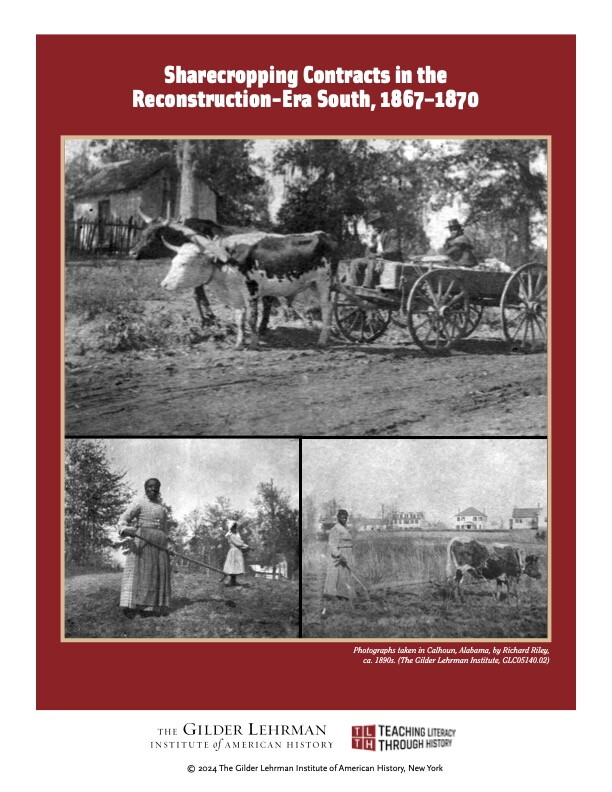Lesson by Erik Bloch
Essay by Felicia Jamison, University of Louisville
Grade Level: 9–12
Number of Class Periods: 3
Primary Era: The Civil War and Reconstruction, 1861–1877

Over the course of three lessons, students will examine two primary source documents in order to evaluate the practice of sharecropping for African Americans during Reconstruction. They will demonstrate understanding of the unit content by completing a written evaluation of the two contracts from 1867 and 1870, providing evidence from the documents to support their arguments.
Lesson Plan Authors: Erik Bloch
Historical Background Essay by: Felicia Jamison, University of Louisville
CCSS.ELA-LITERACY.RH.11-12.2: Determine the central ideas or information of a primary or secondary source; provide an accurate summary that makes clear the relationships among the key details and ideas.
CCSS.ELA-LITERACY.RH.11-12.3: Evaluate various explanations for actions or events and determine which explanation best accords with textual evidence, acknowledging where the text leaves matters uncertain.
CCSS.ELA-LITERACY.RL.9-10.1: Cite strong and thorough textual evidence to support analysis of what the text says explicitly as well as inferences drawn from the text.
CCSS.ELA-LITERACY.W.9-10.1A: Introduce precise claim(s), distinguish the claim(s) from alternate or opposing claims, and create an organization that establishes clear relationships among claim(s), counterclaims, reasons, and evidence.
CCSS.ELA-LITERACY.W.9-10.1B: Develop claim(s) and counterclaims fairly, supplying evidence for each while pointing out the strengths and limitations of both in a manner that anticipates the audience’s knowledge level and concerns.
CCSS.ELA-LITERACY.W.9-10.1C: Use words, phrases, and clauses to link the major sections of the text, create cohesion, and clarify the relationships between claim(s) and reasons, between reasons and evidence, and between claim(s) and counterclaims.
What could a sharecropping contract require from a sharecropper?
What could a sharecropping contract require from a landowner?
How free were freedpeople after emancipation?
Within sharecropping families, who was the most and the least free?
Contract between Isham G. Bailey and Freedmen Cooper Hughs and Charles Roberts, January 1, 1867
Sharecropping Contract between Campbell Brown for the Owners of Melrose Plantation and Frederick Lewis for Himself and His Squad of Freedmen, Bolivar County, Mississippi, March 12, 1870